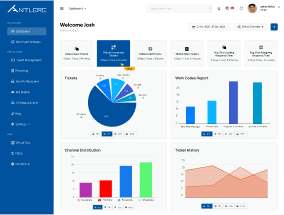As organizations always look to identify ways to achieve efficiency and effectiveness in any business environment. Business Process Analysis (BPA) is a potent tool that assists firms in pursuing these objectives. So, what is Business Process Analysis and how does it help businesses to improve their processes? Let us tackle this important notion in detail and understand how it plays out in enhancing business productivity.
What is Process Analysis?
Process analysis, in other words, consists of the systematic study of a business process in order to understand how it works, how it can be performed more efficiently, and how it can be improved further. It is a fundamental step of business process analysis, which aims to assess and improve existing processes to increase efficiency, reduce costs and performance and ultimately results.
Process analysis is a methodical way to simplify the steps or stages of a task or process to observe, study, and evaluate its efficiency and effectiveness. Using this analysis, you can find problems or bottlenecks in a process where there may be progress limitations.
The Essential Steps of Business Process Analysis
Business Process Analysis (BPA) is more of a high-level view that looks deeper into the business process flow and analyzes the various tasks, roles, tools, and technology that play a role in achieving business objectives. At its core, BPA aims to find processes that can be optimized in order to eliminate inefficiencies and align processes with business goals.
It combines techniques from multiple methodologies such as Lean, Six Sigma, and Total Quality Management (TQM) in order to evaluate and optimize process performance. To summarize, BPA tells companies where they can enhance their daily workflows, create efficiencies, and boost their productivity.

Flow Process Analysis: The Path to Efficiency
The movement of how information and work are done through an organization is an important focus of process flow analysis. This includes mapping out the process flow to identify delays, redundancies, or non-value-added steps that can be eliminated. Knowing how every aspect of the processed data contributes to the forward pass phase to allow for the final output, businesses can take informed decisions and work towards being more efficient and satisfying customer needs.
A process flow is usually in diagram form, such as a flowchart showing how information or tasks flow from one step to the next for stakeholders involved in any process. Especially for the step analysis, where we analyze each step closely and find out where we have opportunities.
How Business Process Analysis Works?
Business process analysis consists of different stages which will enable business to take a step-by-step approach to understanding how to analyze and optimize their processes. Here we outline, in general, the steps of BPA:
- Identify And Map Processes: Start by creating a visual representation of the process that exists today such as charts and flows. The first step is mapping the entire workflow, from beginning to end.
- Collect Data: Collect data relevant to the performance of the process. It could be based on metrics like processing time or costs or resources used or number of errors.
- Determine the Root Issue: Once you have collected the information, review it to find the inefficiencies, bottlenecks, and pain points in the process. It is at this point you may be wondering: What is the reason for the delays? Are there any pointless steps that could be cut out?
- Offer Suggestions for Enhancement: Use your analysis to generate ideas for enhancing the process, either by automating it, properly allocating resources, or organizing tasks differently.
- Optimize and Test: Apply changes and monitor their effectiveness over a period to achieve continuous optimization.

Instances of "Analyze" in Process Analysis
The word “analyze” in process analysis topics is what drives organizations to dig deeper for areas of improvement. For example, when analyzing a customer service process, you might measure key factors such as response time, customer satisfaction, and resolution efficiency. The goal of this analysis is to pinpoint specific delays or issues and propose actionable solutions to enhance the process.
Examples of Analysis Include the Following:
- Reviewing the onboarding process for new hires to identify opportunities for greater efficiency and potential automation.
- Analyzing metrics such as conversion rates and customer engagement to evaluate the success and effectiveness of a marketing campaign.
Through these analyses, businesses can make data-driven decisions to streamline their processes and achieve better results.
Significance of Business process analysis
Business process analysis must be one of the most important things. Organizations can perform BPA and do the following:
- Increased Efficiency: Remove roadblocks and unnecessary processes and achieve faster and more efficient workflows.
- Cost Reduction: Eliminate waste and simplify your processes which leads to huge savings.
- Step Up Customer Satisfaction: With process optimization, companies are able to deliver faster, have a better product quality and better customer service. Business process analytics help organizations make data-driven decisions based on insight.
- Encourage Innovation: Businesses can discover unique solutions to problems by reconsidering current processes enabling a more fluid operating model.
Conclusion
Business Process Analysis is crucial for identifying inefficiencies and implementing improvements to enhance productivity, reduce costs, and improve customer experience. By applying process flow analysis and business process analytics, businesses gain a competitive advantage in a dynamic market.
At Abacus BPO, we leverage BPA to optimize our workflows and deliver cost-effective, high-quality outsourcing services. By continuously refining our processes, we ensure our clients benefit from improved efficiency, productivity, and superior customer service, helping them stay competitive and agile in an ever-changing market.









